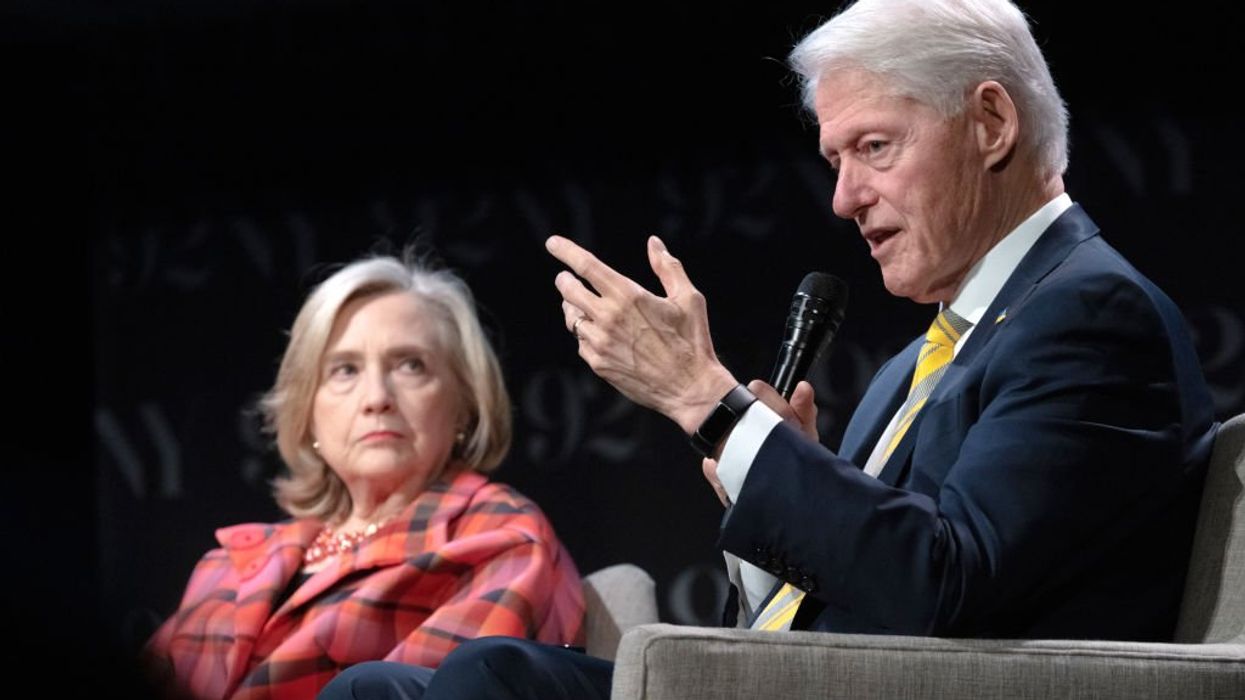
© 2024 Blaze Media LLC. All rights reserved.
Population change is reversing secularism and shifting the center of gravity of entire societies in a conservative religious direction.
As the 2012 presidential election grows closer, voter demographics will grab ever more airtime. In a finely balanced electorate, switching parties is less common, making internal growth of party bases more important. Getting the vote out is one aspect of this; population change another. Three or four decades ago, most Americans had trouble specifying which party was conservative or liberal, or matching them to issue positions. No longer. What's more, as Robert Cushing and Bill Bishop observe in The Big Sort, partisanship affects where people choose to live. Robert Putnam and David Campbell add that politics often determines where they go to church. Thus NPR's Ray Suarez relates that a scout leader he met moved from the Episcopalians to become a Mormon because he didn't want to be associated with a “fag church.” Over time, though, switching declines and battle lines solidify. As theology, ideology, and political party line up, switching becomes less important and the religious and political market is driven more by population shifts. This is not only true in the United States, but in a growing number of societies around the world. All of which explains why pundits' interest in demography has been steadily rising.
Ruy Teixeira, for instance, claims that the growth of the college-educated, secular and Hispanic proportion of the population will soon provide the Democrats with an inbuilt electoral majority. Chris Bowers of the Nation styles this the “End of Bubba Dominance.” On the other side of the ledger, American Enterprise Institute President Arthur Brooks highlights the role of fertility: “Liberals have a big baby problem: They're not having enough of them, they haven't for a long time, and their pool of potential new voters is suffering as a result.” “In Seattle,” adds Phillip Longman of the New America Foundation, “there are nearly 45 percent more dogs than children. In Salt Lake City, there are nearly 19 percent more kids than dogs.”
In order to adjudicate between these competing predictions, I teamed up with Vegard Skirbekk and Anne Goujon, two leading Austrian-based experts in the art of projecting the size of subgroups in populations. The results, published in the journal Population Studies, show that Democrats are only marginally younger than Republicans and Republican women bear the same number of children as their Democratic sisters. Immigration, however, is an important factor. If ethnic party identification remains as it is, Latino population growth will benefit the Democrats, shifting the balance between the two parties by two and a half points in the Democrats’ favor over the next 30 years.
However, Republican fertility is not a dead letter: the GOP has a lead over the Democrats among white women and among younger women at all levels of income and education. If the childbearing gap among women aged 20-40 continues to widen, this will certainly benefit the GOP. But even if Republican women enjoyed a 30 percent fertility advantage for a century, this would only halve the gains accruing to the Democrats from immigration. Were immigration to be cut in half, however, the GOP would quickly begin to close in on the Democrats beyond 2040.
The growing Republican fertility advantage largely derives from religion. In the past, people had children for material reasons—many kids died young, and fresh hands were needed to work the land and provide for parents in their old age. Today, we live in cities and benefit from pensions, while children are expensive. Contraception has severed the link between sex and procreation, placing fertility under our control as never before. Family size, which was once a matter of survival, is now a value choice. Seculars can delay having children and opt for fewer, while the religious—especially fundamentalists—have them earlier and more often. This is sometimes called the “second demographic transition” and is of signal importance because in the United States and elsewhere, ours is an epoch of religious polarization. The challenge of secularism, and its threat to religion in the form of modernist theology, has prompted a fundamentalist backlash across all the major world religions.
Secular-fundamentalist polarization produced the “culture wars” in the United States, in which conservative Catholics, Jews, and Protestants moved closer to each other than to their lapsed coreligionists. Religious Latinos and African-Americans generally vote Democratic, but opt for conservative positions on social issues like abortion. When acting in concert with white religious conservatives, as with Proposition 8 in California, they become a force to be reckoned with. And all have a considerable fertility edge over their pro-choice counterparts. This explains why the pro-life majority in the U.S. population will approach three-quarters of the total by the end of the century. However, the Republican Party is not projected to increase its support. Instead, the growth will be among pro-life Hispanics, most of whom inherit Democratic partisanship.
Many of us believe the ethos of society in a century will more closely resemble the ideas of Christopher Hitchens than those of Jerry Falwell. Yet we forget that most people get their religion the old-fashioned way: through birth. Demography is not destiny, but it is the most predictable of the social sciences. As the population of the world peaks and begins to decline later in this century, the strongly religious will stand against the tide. In so doing, they will remake societies and wash away many of our certainties about secularization, Enlightenment, and the End of History.
Read more from Eric Kaufmann at The American online magazine of the American Enterprise Institute. Mr. Kaufmann's book "Shall the Religious Inherit the Earth?: Demography and Politics in the 21st Century" and other writings are available on Amazon.com.
Want to leave a tip?
We answer to you. Help keep our content free of advertisers and big tech censorship by leaving a tip today.
Want to join the conversation?
Already a subscriber?
more stories
Sign up for the Blaze newsletter
By signing up, you agree to our Privacy Policy and Terms of Use, and agree to receive content that may sometimes include advertisements. You may opt out at any time.
© 2024 Blaze Media LLC. All rights reserved.
Get the stories that matter most delivered directly to your inbox.
By signing up, you agree to our Privacy Policy and Terms of Use, and agree to receive content that may sometimes include advertisements. You may opt out at any time.


